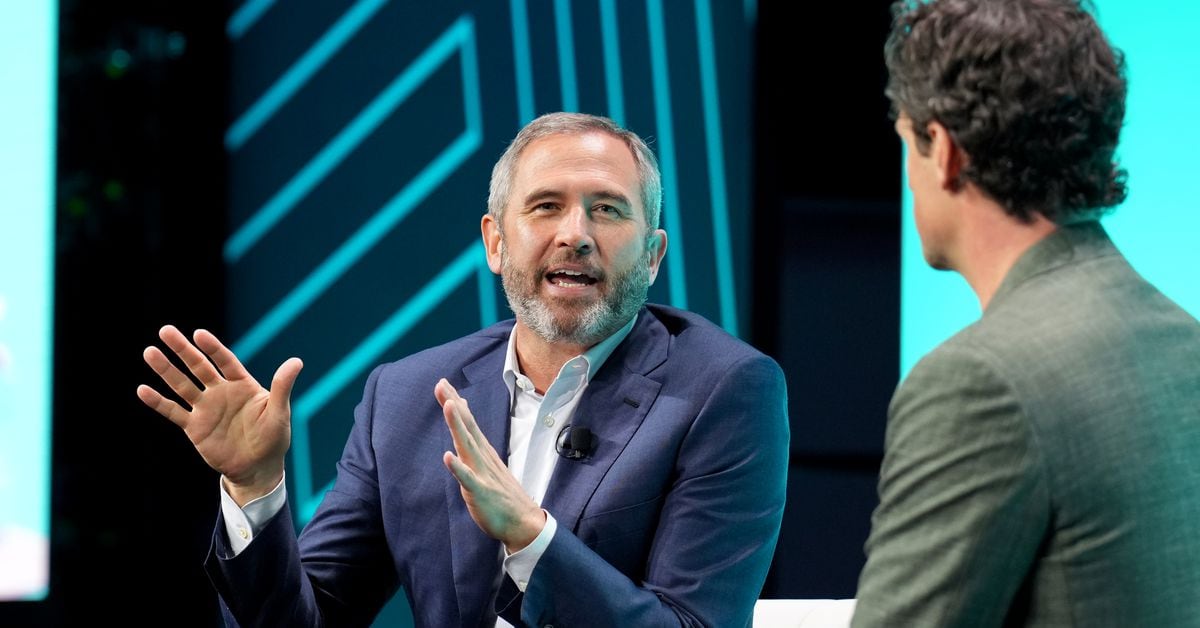Ripple recently scored an unequivocal victory from a dollars-and-cents standpoint in a class action securities lawsuit, with the judge tossing out most of the case.
But the judge also muddied the waters on a bigger issue, diverging from a high-profile decision last year by hinting that Ripple’s XRP might be a security – thus deserving closer regulation. The conflicting rulings from two judges – one calling XRP a security, one saying it’s mostly not – are a symptom of a bigger problem: the lack of legal and regulatory clarity for the crypto industry in the U.S. Until that clarity is granted, either by Congress or a ruling from a higher court, there will likely be more confusion for projects like Ripple and beyond.
On June 20, Judge Phyllis Hamilton of the U.S. District Court for the Northern District of California tossed out most of a class action suit Ripple faced. She allowed only one individual state law claim against the crypto firm and its CEO Brad Garlinghouse to proceed to trial.
The remaining claim – that, during a 2017 interview, Garlinghouse made “misleading statements” in connection with the sale of the XRP token, which the plaintiffs say were securities – is only worth $174, small potatoes for a firm estimated to be worth $11 billion.
That outcome is objectively a huge win for Ripple, something celebrated by the company. The two certified classes in the suit included all investors who purchased XRP over a six-year period and either held it or sold it at a loss. In throwing out all the class action claims, the California judge overseeing the case shielded Ripple from potentially paying enormous damages.
But there was the fly in the ointment: in her ruling, Hamilton suggested that XRP might, in fact, be a security – breaking with the opinion of District Judge Analisa Torres of New York’s Southern District, who ruled last year in a separate case brought by the U.S. Securities and Exchange Commission that XRP was only a security when sold to institutional investors.
Torres’ ruling was widely celebrated as a step toward regulatory clarity for the crypto industry, as well as a potential precedent for other crypto securities cases. Hamilton’s ruling doesn’t undo Torres’ ruling – as Ripple executives have pointed out – but she’s the second district judge to more or less disagree with Torres’ assessment of XRP.
In disagreeing with Torres, Hamilton potentially provided ammunition in the form of another alternative precedent for those who believe XRP – and other cryptocurrencies – are securities, crypto lawyers say.
If this all sounds confusing, that’s because it is – even to crypto lawyers.
Hamilton’s decision to toss out the class action claims was based on statute of limitations grounds, and had nothing to do with whether or not Hamilton thinks XRP might be a security.
“The court found that some of those claims were time-barred and others failed to raise a triable issue,” Joseph Castelluccio, a partner at international law firm Mayer Brown and co-leader of the firm’s fintech and blockchain practice groups, said in an email. “In other words, the Ripple-favorable rulings were not based on the view that XRP is not a security, which has been the central argument made by Ripple and two of its executives in the ongoing cases.”
For the single claim she allowed to proceed to trial, Hamilton applied the Howey Test – a pillar of U.S. regulation based on a Supreme Court ruling, used to determine if an asset is a security or not – to XRP and found that it failed on the third prong, writing: “The [court] cannot find as a matter of law that Ripple’s conduct would not have led a reasonable investor to have an expectation of profit due to the efforts of others.”
What this means, according to crypto lawyers, is that we still don’t definitively know whether XRP is a security or not.
“In sum, the door is not shut on the question of whether XRP may have the status of a security, at least in relation to this ancillary cause of action,” explained Moish Peltz, a partner at New York law firm Falcon, Rappaport and Berkman.
Ripple executives have said that Hamilton’s ruling doesn’t undo Torres’ 2023 ruling that XRP is not a security under federal law.
“In the SEC’s case, Judge Torres’ ruled that under federal law XRP is not in and of itself a security,” Ripple Chief Legal Officer Stu Alderoty said in an emailed statement. “That ruling stands undisturbed and cannot now be challenged in Judge Hamilton’s courtroom.”
It’s true that Hamilton’s ruling does not, in and of itself, challenge Torres’ ruling – though the SEC is likely to appeal its case against Ripple, and could potentially use Hamilton’s ruling as alternative precedent. Hamilton is not the first judge to break with Torres either. Another SDNY judge, Jed Rakoff, explicitly disagreed with Torres’ ruling in a separate case, SEC vs. Terraform Labs.
But, maybe more importantly, the differing decisions underscore that district courts do not have to agree with each other. Though they are free to take guidance from other courts’ decisions, they are not obligated to, until a decision is made by a higher court, like an appellate court or the Supreme Court.
Lawyers interviewed for this story agreed that the district court split over whether or not XRP could be a security when sold on exchanges is a symptom of a much greater issue: the general lack of legal and regulatory clarity on whether a given crypto asset constitutes a security.
“It’s actually very difficult to say what the law is in this area,” said Jason Gottlieb, partner at New York law firm Morrison Cohen, and chair of the firm’s digital assets practice.
“In [Ripple’s] case, when we’re looking at various differing district court opinions, they have not just different results, but different ways of getting those results,” Gottlieb added. “I think there’s a lot of uncertainty when you try to take these district court cases and put them against each other.”
Gottlieb added that since judges are coming to different conclusions, it’s clear the law is not well-developed when it comes to cryptocurrencies.
“We’re going to have a lot of district courts reaching differing conclusions and, even when they reach the same conclusions, they might get there for different reasons,” he said. “Until all these cases bubble up into the appellate courts and ultimately the Supreme Court, we’re not likely to have a lot of clarity on the law in this area.”
But even if district court rulings aren’t necessarily binding, they can serve as a useful precedent in an industry like crypto, where the law is still being developed.
After Hamilton issued her judgment, lawyers for the SEC filed the decision on the docket as a notice of supplemental authority – a way for lawyers to call attention to relevant legal issues in other cases – in their case against Binance, the world’s largest crypto exchange, in Washington, D.C.
Longo didn’t put much stock in the SEC’s decision to file Hamilton’s decision in the Binance case, but said that it has become a frequent practice in the crypto industry for parties in litigation to put out notices of supplemental authority when there’s a potentially relevant decision in another case.
“It’s part of the reality of the fact that so much of the law here has basically been forged in the context of our trial courts,” Longo said. “That’s where the case law has played out. There hasn’t been a new regulation or statute. … I think it’s a symptom of the way the law has evolved here that, oftentimes, any trial court decision on the issue of Howey in the context of a crypto case frequently gets cited around to other courts with decisions on those kinds of issues in front of them.”
Without regulatory clarity from Congress, the crypto industry has no choice but to search for answers in the legal system – a process that Longo and other lawyers noted was expensive and time-consuming.
“The courts are attempting to resolve ‘Neuromancer’ issues at a ‘Bleak House’ pace,” Gottlieb joked.
“The case is about an [initial coin offering, or ICO] that happened in 2014. So, 10 years on, we’re dealing with some of these cases,” Gottlieb added. “We’ve got issues going on today that we’re still going to be grappling with in district courts in five, 10 years down the road – and that’s not even counting when we’ll see results from the appellate courts or Supreme Court.”
Lawyers agreed that the chances of Ripple’s California case actually making it to trial are slim-to-none, because the damages the plaintiff can win are very small.
“Very frequently, these cases don’t go on to trial,” Gottlieb said, adding that in cases where the damages are small, both sides are incentivized to settle out of court.
“Neither side is going to want to go to trial and spend a million dollars in attorneys fees over a few hundred dollars,” Gottlieb said. “If there’s an offer of compromise or an offer of settlement, that increases the pressure on the plaintiff to settle. … It’s hard to see this case going any further.”
Lawyers for the plaintiff did not respond to CoinDesk’s request for comment.
Credit: Source link















































